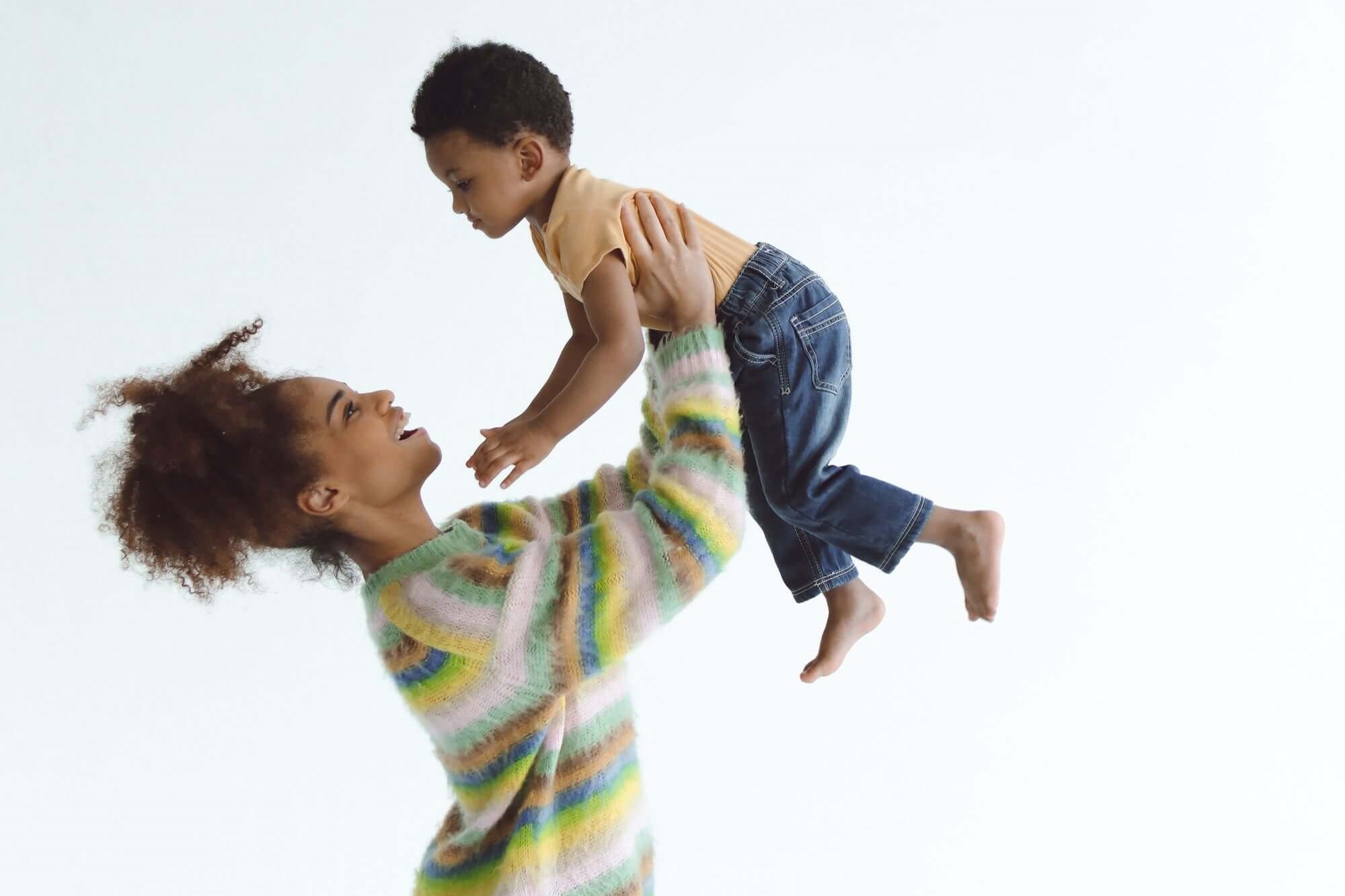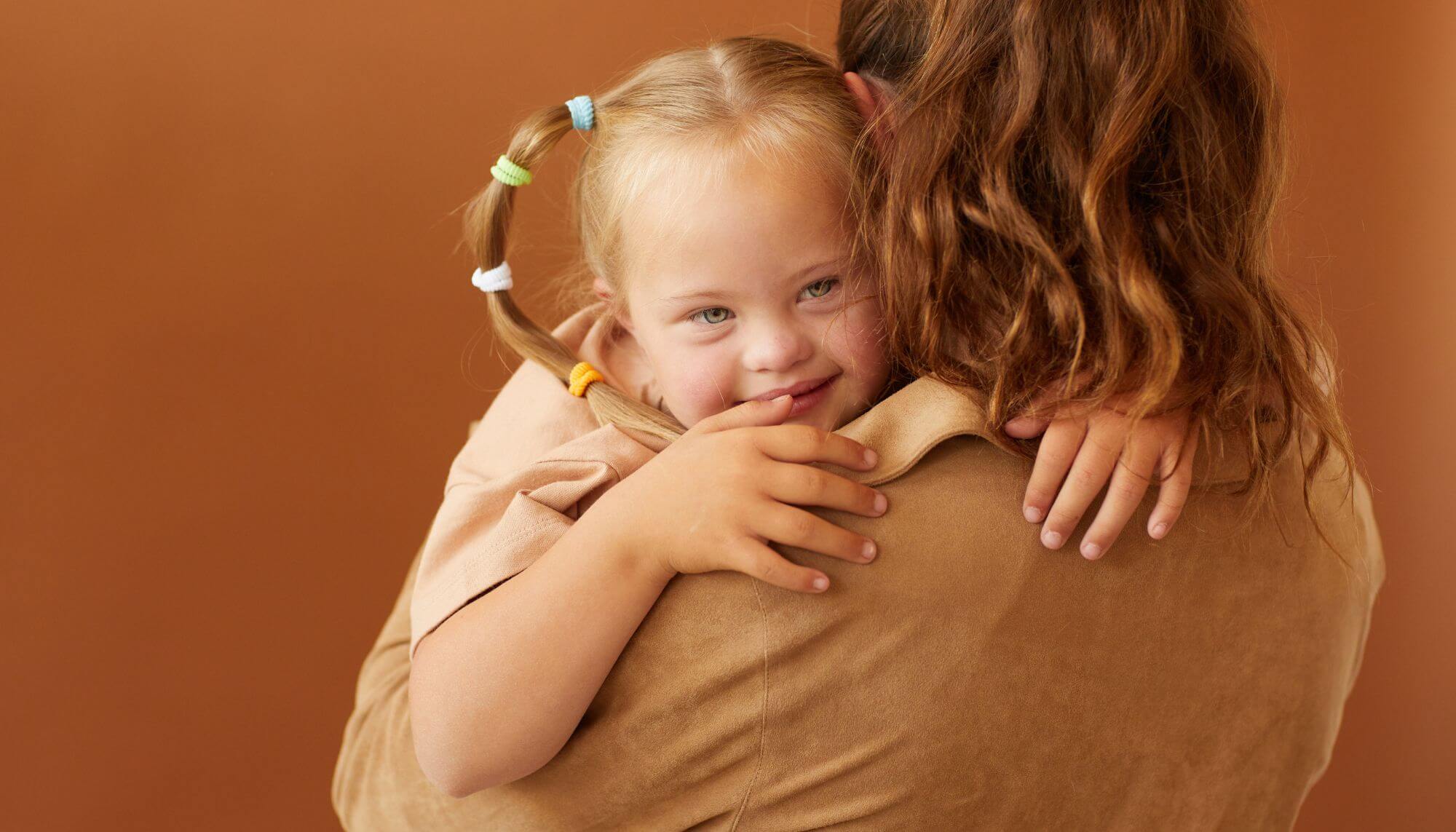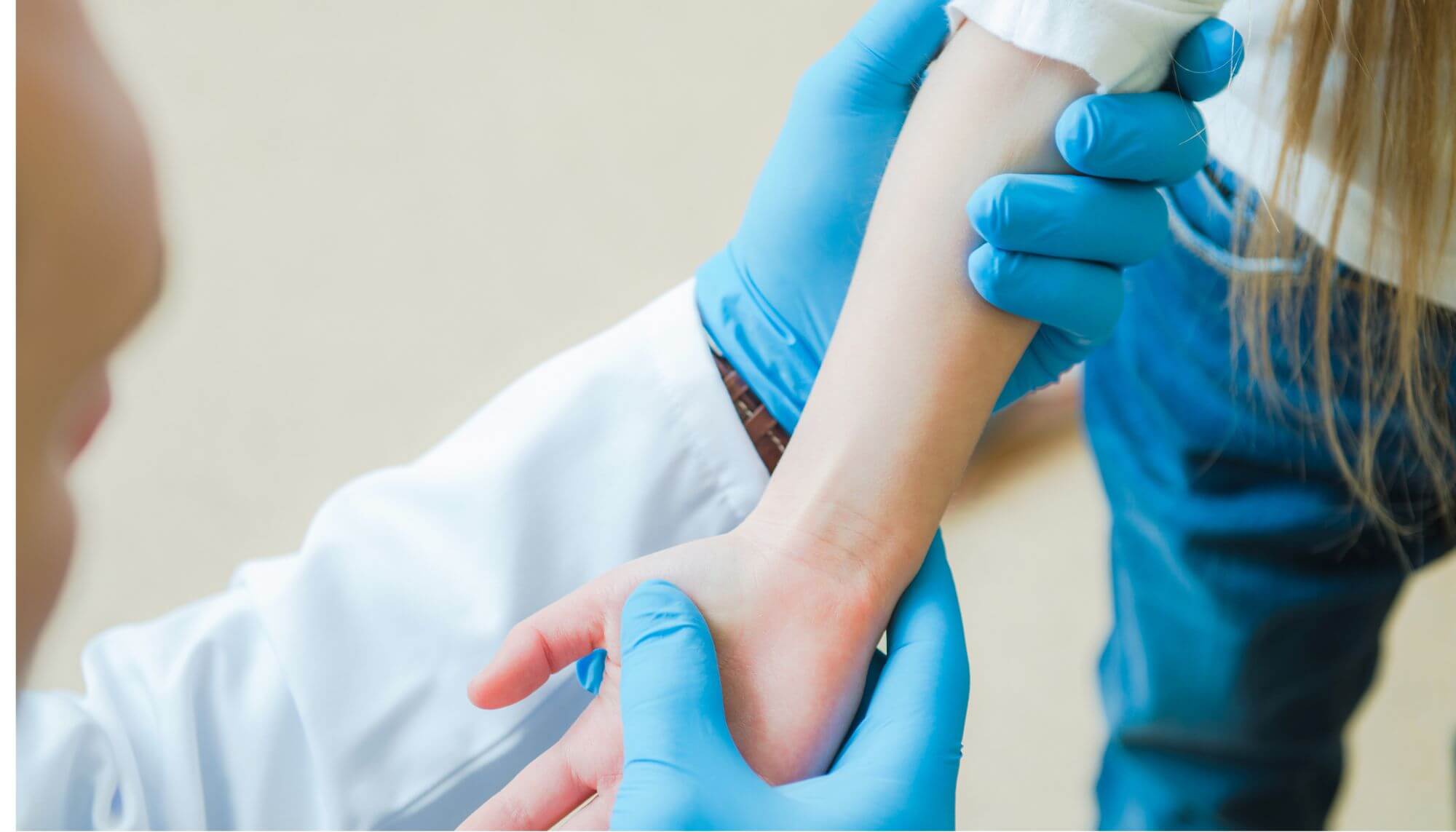Within Arm's Reach

By Jaqueline Deeon
Toddlers are energetic, tough, tactile little people who want to touch, taste, and experience everything around them. So when they move quickly toward something potentially harmful, our natural reaction as their parent or caregiver can be to grab their little hands or arms to pull them out of harm’s way. But did you know that this instinctive action can cause them injury?
While our intentions are good, this action of “saving” them from something worse can result in a pulled elbow, also known as “nursemaid’s elbow”.
What is nursemaid’s elbow?
Nursemaid’s elbow occurs when the head of one of the bones in the forearm slips partially out of place and traps the ligament it is connected to (1).
According to the American Academy of Orthopaedic Surgeons, this injury commonly happens to children under four years old because the bones and muscles of young children are still developing, so very little force is needed to cause a partial dislocation. The medical term for this pulled elbow is “radial head subluxation” (2).
How does nursemaid’s elbow happen?
The term “nursemaid’s elbow” hints at one of the main causes of the injury. In the days when it was common for nursemaids to take care of children, these caregivers would often get blamed for causing injuries by pulling too hard on a child’s arm.
These days, nursemaid’s elbow commonly happens when a parent or caregiver pulls a young child back by the hand or arm to stop them from falling, touching something dangerous, or stepping into danger. It can also happen when:
- swinging your child by the hands while playing.
- pulling toys or other objects out of your child’s hands.
- pulling your child’s arms through the sleeves of a jacket or T-shirt.
- (less commonly) your little one falls onto outstretched arms (3).
What does nursemaid’s elbow look like?
It may not be obvious at first that your child has nursemaid's elbow as you might not have seen the action happen that caused it. Nursemaid’s elbow also doesn’t result in any bruising or swelling. However, if your toddler tells you—either verbally or by crying—that their wrist, forearm or elbow hurts, and they avoid moving their arm below the shoulder or refuse to rotate their palm upwards, they could have nursemaid’s elbow (4).
What should I do if I suspect my child has nursemaid’s elbow?
The pinched ligament can sometimes get “unstuck” by itself, but more often than not, a healthcare professional needs to gently move the arm to get the ligament out from between the two bones, so it is important you seek medical support. This is also crucial to rule out any other potential damage or injury.
The process of reducing the partial dislocation can be uncomfortable, but this will be short-lived and your child will feel much better as the ligament relaxes back into place (5).
It is naturally traumatic for small children when they experience pain. In the first instance, you can apply ice to their elbow (6). Visiting the doctor can be very stressful for the little people in our lives, and having a stranger manipulate their limbs is also stressful. Try to keep calm and support them during the procedure. Also acknowledge that it can be traumatic for you too, and you might feel guilty about what has happened. Remind yourself that nursemaid’s elbow is a very common injury.
There are incidences when a child will refuse to use the arm after suffering a nursemaid’s elbow event, even once the doctor has helped to get the arm working again, because they are afraid of the pain or discomfort they felt before. In these cases, the doctor might put their arm in a sling and prescribe pain medication like acetaminophen (7).
Can nursemaid’s elbow happen to my child again?
Unfortunately, yes. Children who have had a nursemaid's elbow once are prone to getting it again because the original injury may stretch the ligaments, making it harder for the bone to stay in place. However, as your child grows, their bones and ligaments will develop, and the injury will become less likely (8).
How can I prevent nursemaid’s elbow from happening?
We can’t stop our little ones and their boundless energy from exploring, but we can do our best to keep them within arms reach, make their environment safer, and learn how to handle them safely.
Andrew, a former teacher in Bangkok, and his wife, Yanisa, are first-time parents to their busy toddler, Alisa. Andrew shares his experience on being aware of the potential for nursemaid’s elbow:
“We’re always watching Alisa and trying to anticipate when she might get into trouble, while also allowing her to explore independently. We’re also very conscious of not holding her outstretched arms when possible, and we’re extra vigilant in ensuring we pick her up correctly.”
Staying close to your toddler while they explore is a must—as is being aware of potential hazards, such as slippery floors and sharp corners. If you do ever need to scoop your child up quickly, always try and lift them by placing your hands under their armpits or by putting one arm around their torso and the other under their bottom.
Bangkok streets can be especially hazardous for curious explorers with their uneven sidewalks, crowds, and motorcycles riding close to the edge of the road. Holding your toddler in front of you, positioning them in a suitable carrier, or using a stroller can help keep them safe from injury until you reach a place they can safely explore on their own two feet.
Other ways you can minimize the risk of nursemaid’s elbow include:
- avoiding swinging or lifting your child up by the hands, wrists, or arms when playing. This kind of play can be fun for both you and them, but you should always pick them up from under the armpits (9).
- being careful not to pull too hard on your wriggling toddler’s hands as you try to get them through the sleeves of a T-shirt or vest.
- keeping an eye on their energy levels and either carrying or putting them in a stroller when they get tired and unstable on their little feet. This way they are less likely to fall and need to be caught.
- not jerking your child upwards if they do start to fall. Instead, try to catch them by wrapping your arm(s) around their torso.
Remember to communicate these means of preventing nursemaid’s elbow with everyone who cares for and plays with your child—parents, grandparents, older siblings, nannies, and other caregivers.
While there are things you can do to minimize your child’s risk of injury, remember that accidents still can and do happen. Andrew concedes:
“Now that Alisa is walking, it’s hard to avoid holding her arms. Sometimes I’m holding her arm while she is walking, and she slips. There are also times and situations where, for her own safety, I have to grab her by the arm.”
Always do what you can, but remember to have fun with your toddler, help them to explore safely, and enjoy watching them reach their milestones as they familiarize themselves with the amazing world around them.
Photos from Canva.

References
- Nardi, NM. & Schaefer, TJ. Nursemaid Elbow. StatPearls. Treasure Island (FL): StatPearls Publishing. Available from: https://www.ncbi.nlm.nih.gov/books/NBK430777 /
- OrthoInfo. (2019) Nursemaid’s Elbow. https://orthoinfo.aaos.org/en/diseases--conditions/nursemaids-elbow/
- Boston Children’s Hospital. (2024) What is nursemaid's elbow? https://www.childrenshospital.org/conditions/nursemaids-elbow
- Nemours KidsHealth. (2022) Nursemaid’s Elbow. https://kidshealth.org/en/parents/nursemaid.html
- See ref. 4.
- Cleveland Clinic (2023) Nursemaid Elbow. https://my.clevelandclinic.org/health/diseases/22109-nursemaid-elbow
- Children's Hospital of Philadelphia (2024) Nursemaid's Elbow. https://www.chop.edu/conditions-diseases/nursemaids-elbow
- See ref. 6
- See ref. 4
About the Author
Writer and editor Jaqueline Deeon has lived in South-East Asia for 12 years. She is married to a local artist from Khanom. She has written a book about the pink dolphins and hawksbill turtles in the area to educate young children learning to read and hopes her stories will encourage them to grow up to be responsible earth citizens with a love for nature. You can find her in her tea shop, Auntie Moon’s Tea: facebook.com/AuntieMoonsTea.

